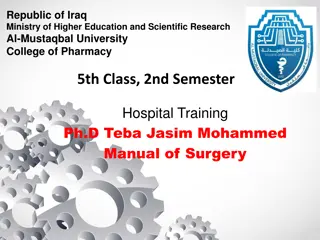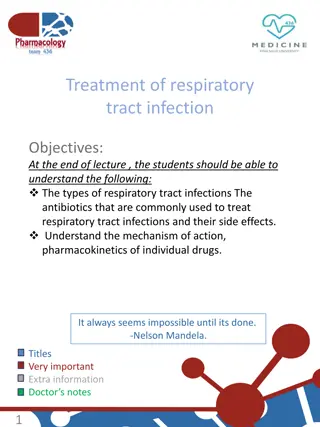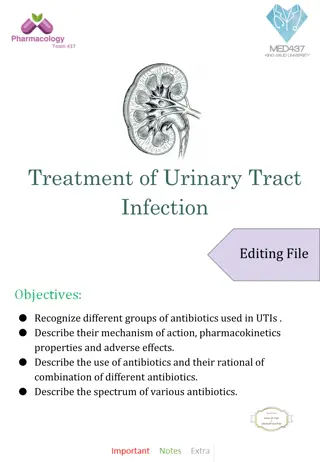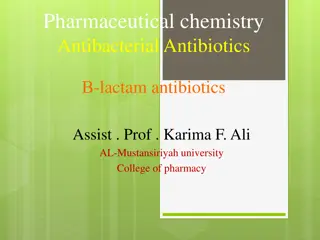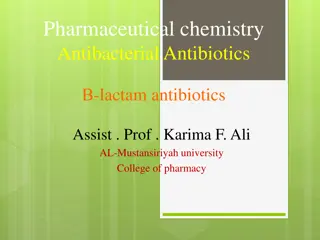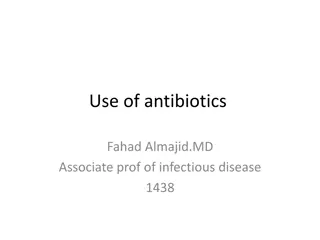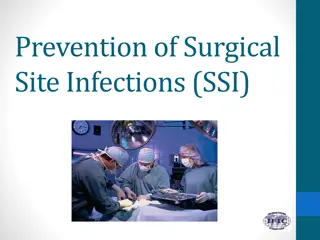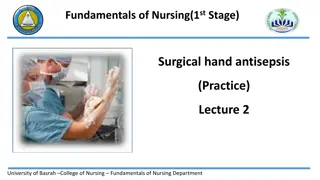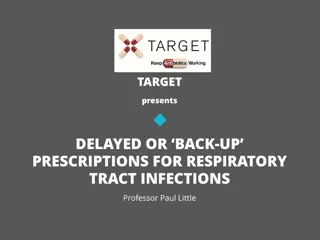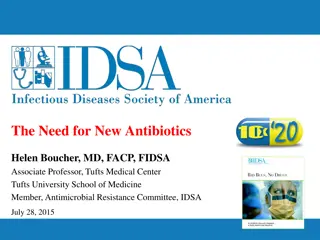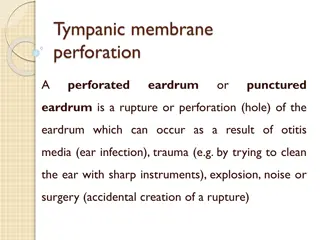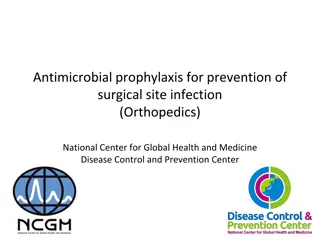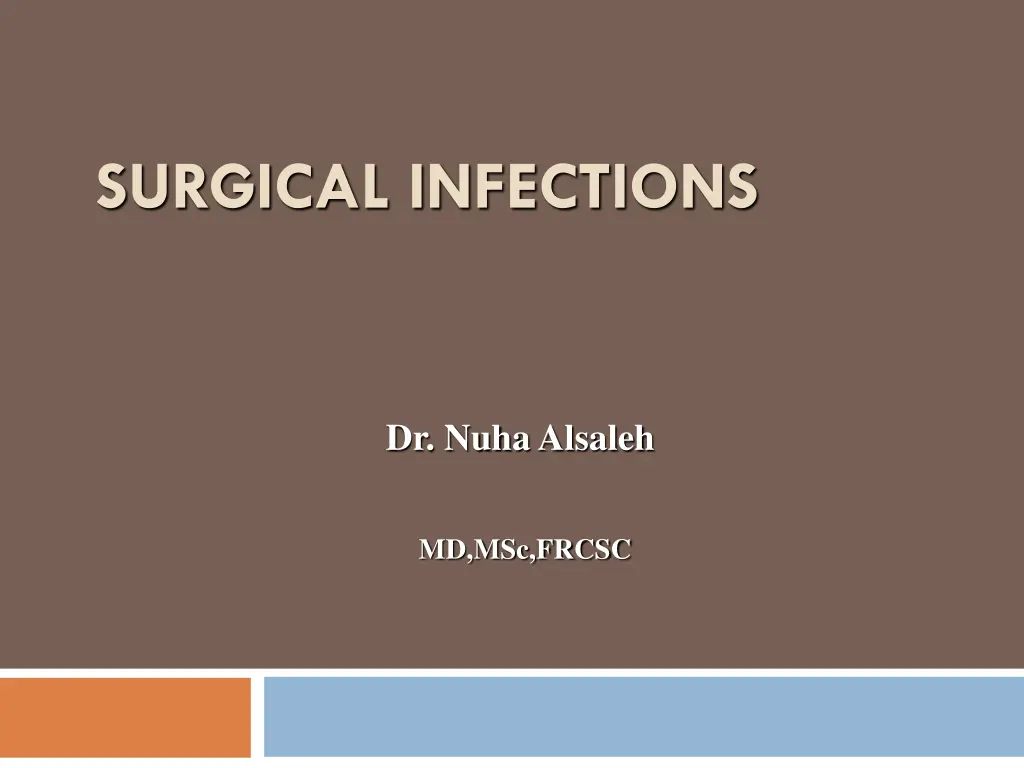
Understanding Surgical Infections and Their Management
Explore the definitions, criteria, and spread of surgical infections including cellulitis, furuncles, and carbuncles. Learn about the signs, symptoms, treatment, and complications associated with these infections. Enhance your knowledge on sepsis, septic shock, and the systemic inflammatory response. Images provided for visual learning.
Download Presentation

Please find below an Image/Link to download the presentation.
The content on the website is provided AS IS for your information and personal use only. It may not be sold, licensed, or shared on other websites without obtaining consent from the author. If you encounter any issues during the download, it is possible that the publisher has removed the file from their server.
You are allowed to download the files provided on this website for personal or commercial use, subject to the condition that they are used lawfully. All files are the property of their respective owners.
The content on the website is provided AS IS for your information and personal use only. It may not be sold, licensed, or shared on other websites without obtaining consent from the author.
E N D
Presentation Transcript
SURGICAL INFECTIONS Dr. NuhaAlsaleh MD,MSc,FRCSC
Infection Infection is defined by: 1. Microorganisms in host tissue or the bloodstream 2. Inflammatory response to their presence.
Inflammatory Response Localized: Rubor, Calor, Dolor, Tumor, and functio laesa (loss of function) Systemic: Systemic Inflammatory Response Syndrome (SIRS)
S.I.R.S. Any Two of the Following Criteria 1. Temperature: < 36.0, >38.0 2. Heart Rate : >90 3. Respiratory Rate: >20 4. WBC: <4,000, >12,000
Sepsis Definition: SIRS plus evidence of local or systemic infection. Septic Shock Definition: Sepsis plus end organ hypoprofusion. Mortality of up to 40%
SPREAD OF SURGICAL INFECTIONS NECROTIZING INFECTION ABSCESSES PHLEGMONS AND SURPERFICIAL INFECTIONS SPREAD OF INFECTIONS VIA THE LYMPHATIC SYSTEM SPREAD OF INFECTION VIA BLOODSREAM
Cellulitis Definition: Diffuse infection with severe inflammation of dermal and subcutaneous layers of the skin Diagnosis: Pain, Warmth, Hyperesthesia Treatment: Antibiotics. Common Pathogens: Skin Flora (Streptococcus/Staphylococcus)
FURUNCLES AND CARBUNCLES Furuncles and carbuncles are cutaneous abscess that begin in skin glands and hair follicles. If the pilosebaceous apparatus becomes obstructed at the skin level, the development of a furuncle can be anticipate A carbuncle is a deep seated mass of fistulous tracts between infected hair follicles. Funruncles are the most common surgical infections, but carbuncles are rare
HIDRADENITIS Serious skin infection of the axillae or groin Consisting of multiple abscesses of the apocrine sweat glands. The condition often becomes chronic The cause is unknown but may involve a defect of terminal follicular epithelium
TREATMENT The classic therapy of furuncle is drainage, not antibiotics. Invasive carbuncles must be treated by excision and antibiotics. Hidradenitis is usually treated by drainage of the individual abscess and followed by careful hygeine
Abscess Definition: Infectious accumulation of purulent material (Neutrophils) in a closed cavity Diagnosis: Fluctuant: Moveable and compressible Treatment: Drainage
DIFFUSE NECROTIZING INFECTIONS Particular dangerous Difficult to diagnose, extremely toxic, spread rapidly, often leading to limb amputation
Pathogenic factors Anaerobic wound Bacterial exotoxins Bacterial synergy Thrombosis of nutrient bridging vessels
Classification of diffuse necrotizing infections Clostridial Necrotizing cellulitis Myositis Nonclostridial Necrotizing fasciitis Streptococcal gangrene
Clostridial Infections They are fastidious anaerobes On gram-stain they appear as relatively large, gram- positive, rod-shaped bacteria. A broad spectrum of disease is caused by clostridia
Clinical Findings Crepitant abscess or cellulitis Invasion is usually superficial to the deep fascia and may spread very quickly, producing discoloration. Delayed debridement of injured tissue after devascularizing injury is the common setting.
Clinical Findings Severe pain suggests extension into muscle compartments ( myositis). The disease progresses rapidly, with loss of blood supply to the infected tissue. Profound shock can appear early, rapidly leading to organ dysfunction. Air bubbles often visible on plain radiograph Crepitus may be present, but not reliable to differentiation .
Nonclostridial Infections Caused by multiple nonclostridial bacterial pathogens. Microaerophilic streptococci, staphyloccci, aerobic gram-negative bacteria, and anaerobes, especially peptostreptococci and bacteroides.
Clinical Findings Usually begins in a localized area such as a puncture wound, leg ulcer, or surgical wound. Externally, hemorrhgic bullae are usually the first sign of skin death The skin is anesthetic and crepitus is occasionally present. The fascial necrosis is usually wider than the skin appearance indicates. At operation, the finding of edematous, dull-gray, and necrotic fascia and subcutaneous tissue confirm the diagnosis.
Streptococcal gangrene Group A streptococcus is a bacterium frequently found in in the skin and throat. Streptococcal gangrene is uncommon The sudden onset of severe pain is the most common presenting symptom, usually in an extremity associated with a wound. Fever and other signs of systemic infection are frequently present at the time of presentation. Shock and renal dysfunction are usually present within 24 hours.
TREATMENT Complete debridement and depress tight fascial compartment. Amputation.
TREATMENT Broad-spectrum antibiotic therapy Resuscitative therapy Treat diabetes mellitus aggressively Hyperbaric oxygenation inhibit bacterial invasion but does not eliminate the focus of infection.
Post-Operative Infections Fever After Surgery The Five W s Wind: Atelectisis Water: UTI Walking: DVT Wonder Drug: Medication Induced Wound: Surgical Site Infection
Surgical Site Infections 3rd most common hospital infection Incisional Superficial Deep Organ Space Generalized (peritonitis) Abscess
SSI Definitions Infection Systemic and local signs of inflammation Bacterial counts 105 cfu/mL Purulent versus nonpurulent LOS effect Economic effect Surgical wound infection is SSI
Superficial Incisional SSI Infection occurs within 30 days after the operation and involves only skin or subcutaneous tissue of the incision Skin Superficial incisional SSI Subcutaneous tissue Mangram AJ et al. Infect Control Hosp Epidemiol.
Deep Incisional SSI Infection occurs within 30 days after the operation if no implant is left in place or within 1 year if implant is in place and the infection appears to be related to the operation and the infection involves the deep soft tissue (e.g., fascia and muscle layers) Superficial incisional SSI Deep soft tissue (fascia & muscle) Deep incisional SSI Mangram AJ et al. Infect Control Hosp Epidemiol.
Organ/Space SSI Infection occurs within 30 days after the operation if no implant is left in place or within 1 year if implant is in place and the infection appears to be related to the operation and the infection involves any part of the anatomy, other than the incision, which was opened or manipulated during the operation Superficial incisional SSI Deep incisional SSI Organ/space SSI Organ/space Mangram AJ et al. Infect Control Hosp Epidemiol. 1999;20:250 278.
SSI Risk Factors Operation Factors Duration of surgical scrub Maintain body temp Skin antisepsis Preoperative shaving Duration of operation Antimicrobial prophylaxis Operating room ventilation Inadequate sterilization of instruments Foreign material at surgical site Surgical drains Surgical technique Poor hemostasis Failure to obliterate dead space Tissue trauma Mangram AJ et al. Infect Control Hosp Epidemiol.
SSI Risk Factors Patient Characteristics Age Diabetes HbA1C and SSI Glucose > 200 mg/dL postoperative period (<48 hours) Nicotine use: delays primary wound healing Steroid use: controversial Malnutrition: no epidemiological association Obesity: 20% over ideal body weight Prolonged preoperative stay: surrogate of the severity of illness and comorbid conditions Preoperative nares colonization with Staphylococcus aureus: significant association Perioperative transfusion: controversial Coexistent infections at a remote body site Altered immune response Mangram AJ et al. Infect Control Hosp Epidemiol.
PRE-OPERATIVE SHAVING
Pre-operative shaving Shaving the surgical site with a razor induces small skin lacerations potential sites for infection disturbs hair follicles which are often colonized with S. aureus Risk greatest when done the night before Patient education be sure patients know that they should not do you a favor and shave before they come to the hospital!
Influence of Shaving on SSI No Hair Removal Group Depilatory Shaved Number 155 153 246 Infection rate 0.6% 0.6% 5.6% Seropian. Am J Surg 1971; 121: 251
Prophylactic Antibiotics Antibiotics given for the purpose of preventing infection when infection is not present but the risk of postoperative infection is present
Prophylactic Antibiotics Questions Which cases benefit? Which drug should you use? When should you start? How much should you give? How long should antibiotics be continued?
Surgical site prevention Use antibiotics appropriately Avoid shaving Site Optimize oxygen tension Maintain normal Body temp Maintain normal Blood glucose
Treatment Incisional: open surgical wound, antibiotics for cellulitis or sepsis Deep/Organ space: Source control, antibiotics for sepsis
Types of Surgery Clean Hernia repair breast biopsy Cholecystectomy planned bowel resection Non-preped bowel resection perforation, abscess 1.5% Clean- Contaminated 2-5% Contaminated 5-30% Dirty/infected 5-30%
Occupational Blood Bourne Virus Infections HBV HCV HIV Risk from Needle stick Chemoprophylaxis 30% 2% 0.3% Yes No Yes Vaccine Yes No No

